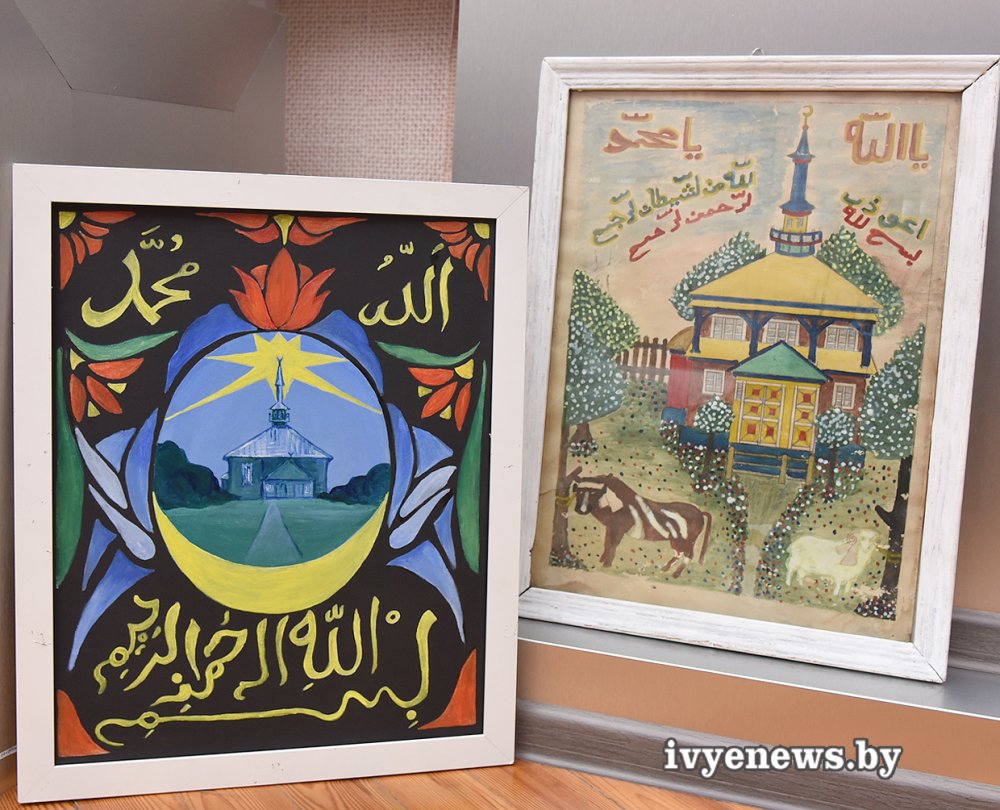
Mugiry
At the end of 2024, at the meeting of the Belarusian Republican Scientific and Methodological Council on Historical and Cultural Heritage, the Ministry of Culture of the Republic of Belarus granted the status of intangible cultural value to the element “Making mugirs in the Iv’e district”.
Back in the 19th century, mugirs were brought to Iv’e by Tatar merchants from far abroad, as well as during pilgrimages to Constantinople and other holy places for Muslims. As a rule, these were industrially produced artistic products on Muslim religious themes, which were often sold at trade markets in places of greatest Tatar population. They were purchased by Muslim believers to decorate mosques and their homes.
The tradition of writing and drawing mughirs in the Iviy region dates back to the beginning of the 20th century, when, to decorate the Iviy mosque built in 1882, a resident of Iviy, Suleiman Yakh’evich Rafalovich (1909-2001), created a mughir with the image of the famous mosque – the Great Mosque of Hagia Sophia in Constantinople. The drawing was made in pencil and watercolors. Since the master himself had never been to Istanbul, he performed his work in an uncharacteristic creative manner – engraving, using an image from a printed source. In the master’s subsequent works – mughirs of 1934 and 1988 – a special manner of drawing is felt, which makes the master’s hand recognizable. Muslim women become his followers. The intertwining of Tatar and Belarusian cultures over six centuries of co-existence has become very close. Muslim or, more precisely, Tatar culture has become an integral part of the culture of Belarus. The art of making mughirs in the Tatar community of Ivie has acquired a characteristic local distinctiveness, which is determined by the organic combination of folk artistic traditions of the Tatar and Belarusian peoples. In most cases, plots, drawings, texts characteristic of Muslim culture indicate the influence of the stylistics of local traditions of folk artistic painting on glass, embroidery and other types of crafts of traditional Belarusian culture. In this form and under this name, the original art of making mughirs is not found anywhere else but in Belarus.
